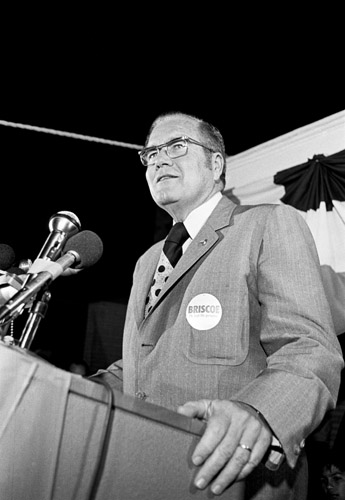
Dolph Briscoe Jr. (1923–2010), who served as Texas governor from 1973 to 1979, led a distinguished career in public service, business, and ranching. A lifelong resident of Uvalde, Texas, Briscoe was first elected to the Texas Legislature in 1948 and served as a state representative from 1949 to 1957. As part of the reform movement in state politics stemming from the Sharpstown scandals, Briscoe won election as governor in 1972. During his six years as governor, Briscoe presided during a period of reform in state government as Texas’s population and commerce boomed. Following his two terms as governor, Briscoe returned to the cattle ranching and banking business in Uvalde. He was recognized as one of the leading citizens of the state and a benevolent supporter of many civic, cultural, and educational institutions in Texas and the nation.
In 2008, The University of Texas at Austin announced the naming of its Center for American History after Governor Briscoe in recognition of his support for preserving and promoting Texas and U.S. history.
Early life and the Briscoe family
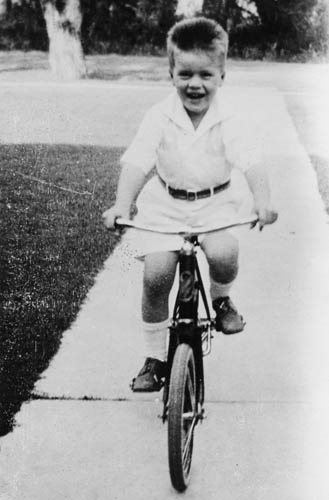
The Briscoe family settled in Texas in what is now Fort Bend County in 1832. Andrew Briscoe signed the Texas Declaration of Independence, led a company of volunteers in the battle of San Jacinto, and was appointed the first judge of Harris County by Sam Houston. Dolph Briscoe Sr. and his wife, Georgie, moved from their home in Fort Bend County to Uvalde in 1910, where Briscoe Sr. became a cattle rancher, mohair merchant, and banker. Briscoe Sr. was a close associate of Humble Oil Company founder, Texas Governor Ross Sterling. During Governor James Allred’s term, the Briscoe Sr. was appointed chairman of the Texas Racing Commission. From 1930 to 1933, he served on the board of directors of First State Bank of Uvalde with the community’s most famous member, congressman and future vice president John Nance Garner.
Dolph Briscoe Jr. was born on April 23, 1923.
College and the Army
After his graduation from Uvalde High School as valedictorian, Briscoe Jr. attended the University of Texas. He was active in many campus organizations, including the Friars and Chi Phi Fraternity, and was editor of the Cactus yearbook.
While at the university, he met fellow student Janey Slaughter of Austin, and they were married in 1942. The couple had three children, Janey Briscoe Marmion, Dolph Briscoe III, and Cele Briscoe Carpenter.
After his graduation from The University of Texas at Austin in 1943 with a Bachelor of Arts degree, Briscoe enlisted as a private in the United States Army. He served in the China–Burma–India theater during World War II and advanced in rank to become an officer.
When Briscoe returned from the service, he returned home to Uvalde and the ranching business.
Beginning of his political career
Briscoe was first attracted to politics at an early age. Thanks to his father’s friendship with Governor Ross Sterling, the young Briscoe traveled to Austin and the Governor’s Mansion in 1932. At the age of nine, Governor Sterling invited Briscoe to stay at the mansion and sleep in Sam Houston’s bed. Briscoe later recalled, “I sort of liked the place, and I always wanted to go back.” Briscoe counted Vice President John Nance Garner, President Lyndon Baines Johnson, House Speaker Sam Rayburn, and Governor Sterling as his political mentors.
Briscoe’s first step into elective politics began with a race for state representative in 1948. He won his first election and served from 1949 to 1957. He became best known as the author of the Colson-Briscoe farm-to-market road system. He also held key chairmanships for the agriculture and highway committees. Briscoe was recognized as an effective debater and knowledgeable legislator during his four terms.
Return to Uvalde and to ranching
When Briscoe Sr. passed away in 1954, Briscoe Jr. returned home to head the family ranching business instead of running for a fifth term. Briscoe Jr. became the owner and manager of one of the largest and most diverse ranches in Texas. By 1972, he was the state’s largest individual landowner.
As the youngest person to become president of the Texas and Southwestern Cattle Raisers Association in 1960, Briscoe and the organization raised $3 million in voluntary contributions to encourage the federal and state governments to launch a screwworm eradication program in Texas and the Southwest. Livestock growers consider the program to be the most important and beneficial development in the history of the industry, saving livestock producers millions of dollars annually.
Return to politics as Governor of Texas
Briscoe attempted to reenter the political arena in 1968, when he joined a crowded field of candidates seeking to replace retiring Texas Governor John Connally. Briscoe finished fourth in the Democratic primary that year.
Four years later, when the Sharpstown bank scandal rocked state government, Briscoe ran as a reform candidate and defeated incumbent Governor Preston Smith and Lt. Governor Ben Barnes in the primary. He later bested another reform candidate, state Representative Frances “Sissy” Farenthold, in the runoff election. He ran on a platform of honesty and integrity in government and opposed any new state taxes. After his victory in the Democratic primary, he defeated state Senator Henry Grover, the Republican nominee, and Ramsey Muniz, the standard bearer for La Raza Unida, in the 1972 general election. Notably, Briscoe won his contest while President Richard Nixon easily defeated Democratic nominee George McGovern by nearly a two-to-one margin in Texas.
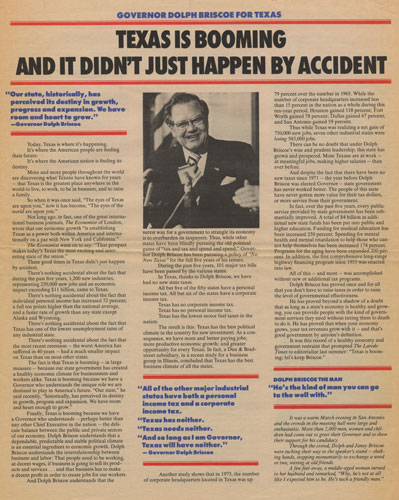
During his two terms as governor, Briscoe balanced increasing demands for more state services and a rapidly growing population. As the governor elected during a period of social unrest and skepticism about the motives of elected officials, he helped restore integrity to a state government that had fallen into disgrace as a result of the Sharpstown scandals. Briscoe’s terms as governor led to a number of landmark events and achievements, including the most extensive ethics and financial disclosure bill in state history, passage of Open Meetings and Open Records legislation, and strengthened laws regulating lobbyists. Briscoe also presided over the first revision of the state’s penal code in one hundred years.
Briscoe added $4 billion in new state funds for public education and higher education, and increased teacher salaries by the highest percentage in history and increased salaries for state employees. He expanded services to handicapped Texans by the department of Mental Health and Mental Retardation and established the first toll-free hotline for runaway children. He appointed a larger number of women and minorities than any previous administration and appointed the first African American members to state boards and appointed the first African American district judge. No new state taxes were passed during Briscoe’s terms as governor, making him the first governor since World War II to hold the line on new state taxes or increasing existing state taxes.
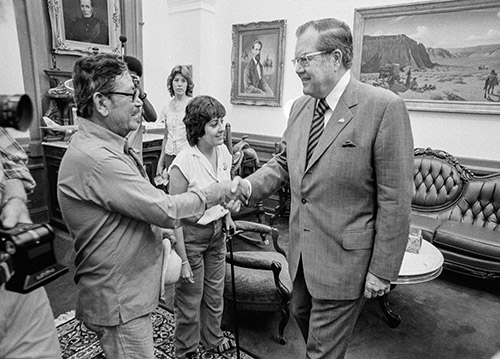
In addition to his accomplishments as governor, Briscoe served as chairman of the Southern Governors Association, presided over the Interstate Oil Compact Commission, served on the National Petroleum Council, and was on the executive committee of the National Governor’s Association.
Janey Briscoe
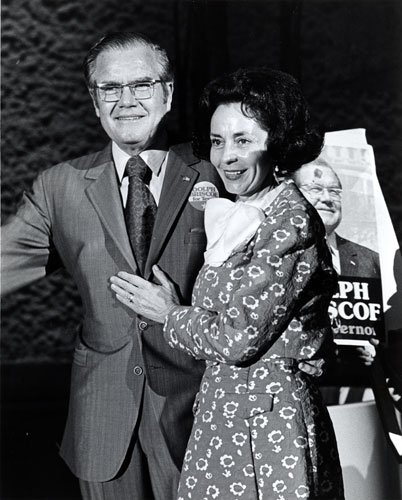
During her husband’s terms as governor, Janey Briscoe served as an activist first lady and often drew press attention for her activities. Janey Briscoe, who had received her B.S. and M.S. degrees in education from The University of Texas at Austin, later served on the UT System’s Board of Regents. Both Dolph and Janey Briscoe received Distinguished Alumni recognition by The University of Texas at Austin. Among her many areas of service, Janey Briscoe was chairman of the Generation Connection, which coordinated the efforts of human welfare and service agencies to increase public awareness of the needs of mature Texas citizens. She also founded and headed the First Lady’s Volunteer Program, which helped coordinate the activities of volunteer groups across the state. She was a strong voice for Mental Health and Mental Retardation projects for the handicapped. She played a vital role on the Mansion Committee of the Arts and Humanities to preserve the historical significance of the Governor’s Mansion. She was a founding member of De Las Encinas Chapter of the Daughters of the American Revolution; a past president of the Texas Sheep and Goat Raisers Auxiliary; and a director of Uvalde United Fund. She worked with the Girl Scouts and served as a board member of the Uvalde Opera House Restoration.
Janey died of cardiovascular disease in 2000. Governor Briscoe provided donations to establish the University of Texas Health Science Center’s Janey Briscoe Center of Excellence in Cardiovascular Research, which is one of the top cardiovascular research centers in the nation. In 2006, the National Western Art Foundation announced the Dolph and Janey Briscoe Western Art Museum in San Antonio, a museum dedicated to art of the American West.
Briscoe’s legacy and the Center for American History
In 2008, The University of Texas at Austin announced the naming of its Center for American History after Governor Briscoe, following gifts totaling $15 million and in recognition of his support for preserving and promoting Texas and U.S. history. “The history of Texas has long been a passion of mine,” said Governor Briscoe. “Accordingly, I have been an avid fan of the Center for American History, which has the largest collection of Texana in existence. I believe that the outstanding work that Dr. Carleton and the center carries out should be continued, enhanced, and expanded.”
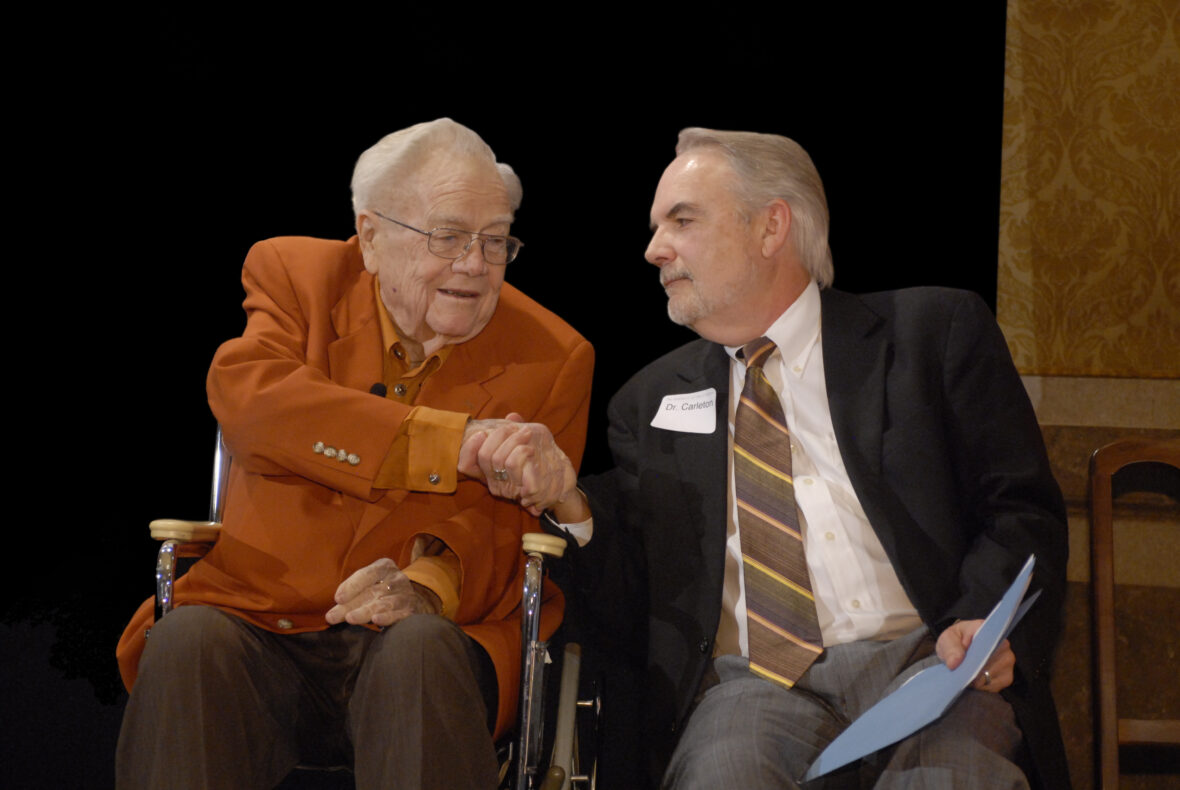
Governor Dolph Briscoe died in 2010. He was buried at the Briscoe Rio Frio Ranch Cemetery at the family ranch next to his wife.
In 2011, the Board of Regents of The University of Texas System approved the renaming of the John Nance Garner Museum to the Briscoe-Garner Museum in honor of the late Governor Dolph Briscoe.
Dolph Briscoe Papers, 1932–2010
Governor Briscoe’s papers are part of the center’s congressional and political history collections and are available in the center’s Research and Collections Division located on The University of Texas at Austin campus. The finding aid for the Dolph Briscoe Papers can be found here.
Dolph Briscoe: Texan exhibition
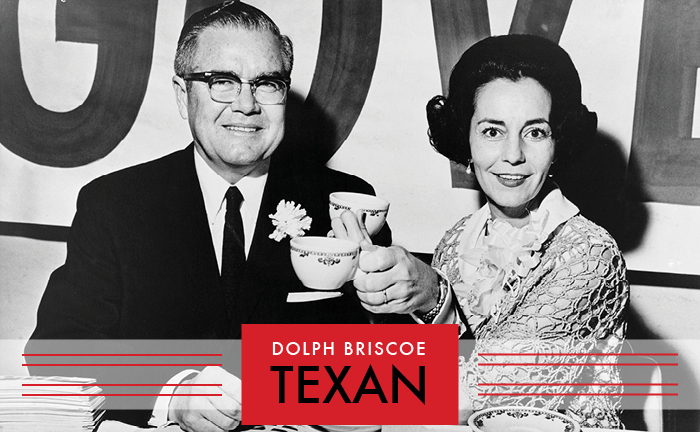
Dolph Briscoe: Texan is organized around key themes in the governor’s life and career, and covers his time as a rancher and family man in Uvalde, his military service in World War II, his key accomplishments while serving as a state representative and later governor of Texas, and his wide-ranging philanthropic activities. Learn more about this permanent exhibition displayed on the second floor of the Briscoe-Garner Museum.
Dolph Briscoe: My Life in Texas Ranching and Politics
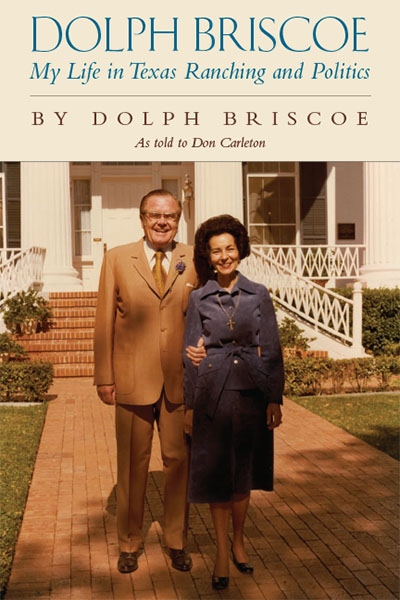
By Dolph Briscoe, as told to Don Carleton, foreword by Dolph Briscoe IV
Now with a foreword by the historian Dolph Briscoe IV, here is the autobiography of former Texas governor Dolph Briscoe, who played a crucial role in restoring public confidence in the integrity of state government.
Learn more about this publication.


